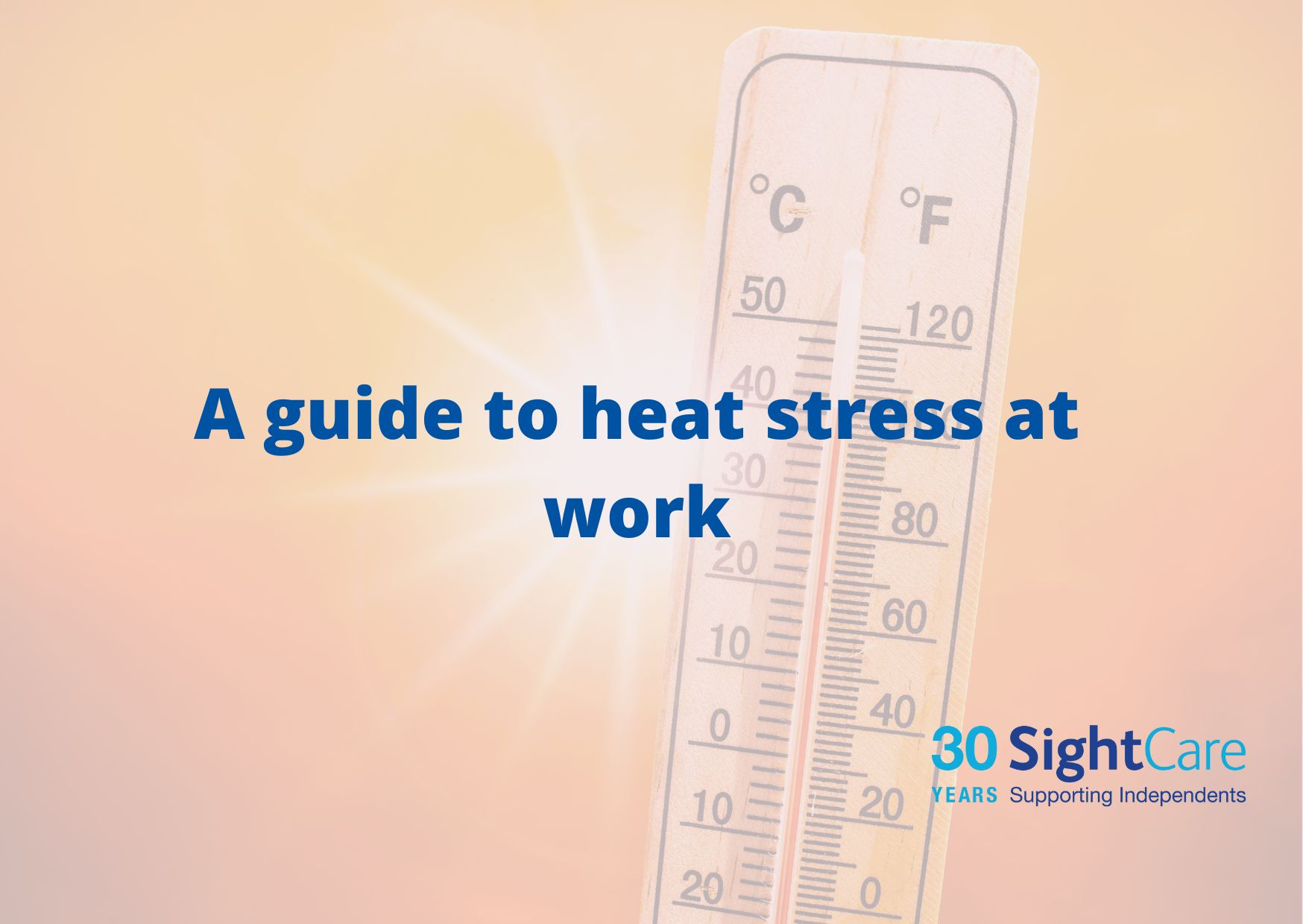A guide to heat stress at work
A guide to heat stress at work
To nip any confusion in the bud, heat stress isn’t restricted to outdoor temperatures. Heat stress is an issue all year round – particularly so in places like bakeries and foundries.
That said, heat stress can become more of an issue during the warmer, summer months, in places where it might not ordinarily be a concern – like an office or vehicle, for example.
What is heat stress?
Heat stress arises when the human body fails to regulate its own internal temperature. There are a number of factors that could lead to heat stress, like:
– Air temperature
– Work rate
– Humidity
– Clothing
Everyone’s body acts in different ways, and so the signs of heat stress will vary from employee-to-employee. Some common symptoms include:
– Lack of concentration
– Muscle cramps
– Heat rash
– Severe dehydration – this is usually a late symptom
– Fainting
– Heat exhaustion – this includes indicators like headaches, nausea and fatigue
– Heat stroke – this could be anything from confusion to seizures, and is the most severe symptom of heat stress.
Because of this, identifying the risks of heat stress isn’t always as simple as it may seem.
As an employer, it’s your responsibility to be aware of what factors within your business’ environment could lead to heat stress, and identify how those factors could be reduced to lessen the risk of heat stress becoming a problem.
Signs of heat stress
Everyone’s body acts in different ways, and so the signs of heat stress will vary from employee-to-employee. Some common symptoms include:
– Lack of concentration
– Muscle cramps
– Heat rash
– Severe dehydration – this is usually a late symptom
– Fainting
– Heat exhaustion – this includes indicators like headaches, nausea and fatigue
– Heat stroke – this could be anything from confusion to seizures, and is the most severe symptom of heat stress.
What you need to do
If you feel there’s a risk of heat stress occurring in your business’ work environment, you must carry out a risk assessment.
Your risk assessment should follow five core stages:
What you need to do
- Identify which factors might cause heat stress
- Recognise who’s in harm’s way and how they could be effected
- Risks and implement control measures to control the hazard of heat stress
- Document any significant findings
- If necessary, review and update your assessment at a later date
Risk assessment checklist
From air velocity and radiant temperatures, to metabolic rates and air movement, heat stress checklist’s can be incredibly complex.
When conducting a heat stress risk assessment, the main considerations to include are:
Work rate: the physically harder employees are required towork; the more body heat they’ll generate – increasing the risk of heat stress.
Climate: your workplace’s air temperature, air movement and humidity will impact the climate, as well as the proximity an employee is to a heat source.
Attire: certain clothing or protective equipment might negatively affect an employee’s efficiency to regulate their own temperature, like sweating, for example.
On top of these major factors, remember to take an employee’s age, body build and medical history into consideration too, as these could all affect their tolerance to heat.
During your risk assessment, make sure you make a point of speaking to affected employees. After all, who knows how they’re feeling better than them?
If you detect early signs of heat stress, you may need to reach out to someone with experience – like an occupational health professional or doctor, for example – to determine the risk of your business’ environment.
Addressing the risks
1. Temperature: you could regulate the temperature by installing fans, air conditioning or barriers that reduce an employee’s exposure to radiant heat.
2. Regulate exposure: encourage employees who’re working in hot environments to take regular rest breaks in places where the temperature’s cooler, cap the amount of time they work in conditions that pose heat stress risks and, if possible, let them complete the work during cooler times of the day.
3. Hydrate: provide water bottles or stations and encourage employees to regularly take water on board before, during (if possible) and after working in a hot environment.
4. Cooling clothing: where appropriate, provide employees with personal protective equipment (PPE) that utilises cooling systems or breathable materials. It’s important to also consider the hazards other PPE may pose.
5. Knowledge is power: make sure all new and existing employees are trained up on heat stress. Inform and remind them of the risks specific to their role, what symptoms to look out for, how they can reduce the risks and what they should do in the event of an emergency.
6. Acclimatise: if an employee is new to an environment that poses heat stress risks, allow them to acclimatise and monitor if/how well they settle in. If they’re struggling with the conditions, you may need to consider placing them at a cooler work station, if possible.
7. Due diligence: before throwing an employee into an environment that puts them at risk of heat stress, make sure they don’t have any illnesses or conditions, i.e. a heart condition, that could put them at greater risk. If they do, you may need to seek advice from an occupational health professional or doctor with regards to next steps.
8. Regularly check-in: if you’ve done all you can to eliminate the risks of heat stress, but you still feel there’s a residual risk, you should make a point of monitoring the wellbeing of employees who are exposed to said risks. We’d recommend you reach out to someone with expertise in the area – a doctor or occupational health professional, for example – to get a better understanding of the health risks.

